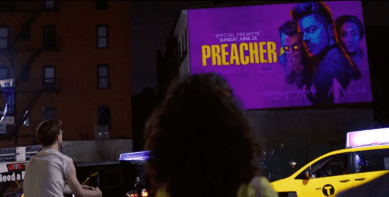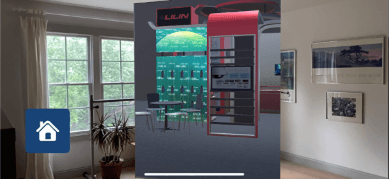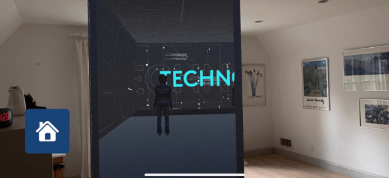Touchless Technologies Will Define the Next Brand Experiences

First, content was king. Then, engagement was even more important than content. It wasn’t enough to just have eyeballs on content, it was vital to prompt interaction. This soon made experiential marketing a favorite objective for brands, and this created a rise in technologically adept creative agencies that were tasked with making cool, new things happen on a regular basis.
Currently, our extremely isolated circumstances have brought a new priority to the fore in brand experiences. “Now the question is, how do I build and maintain connection with my audience in this new environment?” says David Title, Partner with Bravo Media.
Part of that question is philosophical, Title notes, “like, what is connection?” And the answer, for now, seems to be video, as evinced by the exponential spike in video chats and live streams that even the least tech-savvy person has mastered. Seeing a human on a video screen can help assuage the isolation we’re feeling.
But already, screen time is wearing thin. Audiences are looking for more fulfilling ways to engage. Subsequently, brands are considering the use of experiential technologies that until recently seemed like a reach, but maybe now is their moment to create real connection.
For instance, AR, which Bravo Media recently combined with its own internal 3D-modeling pre-visualization process to create a virtual world for a brand’s clients to visit as a substitute for an in-person experiential marketing event. “Is it a fair replacement for the original experience? Not quite,” Title says. “But it is something that can help build connection.”

Bravo Media combined AR technology with its internal 3D-modeling pre-visualization to create a virtual world as a substitute for an in-person experiential marketing event.
The next step from an AR perspective might be the continued virtualized morphing of experience designs created for the real world. This creates opportunities for advancement in the technological realm, Title says: “If we’re going to build this specifically for the AR experience, what would we change about it? There are ways you can make it interactive, responsive and make it more purpose-built to that platform, as opposed to what we’re doing now, which is a little bit of a hybrid.”

AR will continue to enhance the virtualized morphing of experience designs formerly created for the real world.
In the virtual realm, there is also talk of VR finally having its day, as sales of hardware for that platform are on the rise now, too. Fortunately, the medium’s tendency to cause nausea and motion sickness is less of an issue now, as frame-rate and latency challenges have faded. Plus, there are more robust wireless VR headset options available. But still, VR market penetration is limited, Title notes, “so you really can’t build a campaign around it right now.”
From a big AV perspective in brand experiences, there are a couple of new angles to consider. First, touchless interaction is going to be big. So, firms with expertise in how to incorporate motion sensors, force sensors, and proximity sensors to create responsive environments will be in demand.
And projection mapping will probably continue to grow, especially because even as the world begins to open again, social distancing will remain a priority for a long time. Because with large-scale projection, Title says, “you can reach lots of people and make an impact and make a connection, but still be secure in the fact that you're not endangering anybody's safety.”
Of course, creating connection has always been a core tenet to brand experience and AV integration in general, but what we have now is a renewed interest in extending that connection to create more of an impact in a socially distanced world. That will require new and creative integration skills that have built the AV industry, and new collaborations are likely to arise.
Already, there seems to be a collaborative effort between people who work in many facets of live production and experience design these days. “One thing that's nice is, with a few exceptions, everyone’s got a bit more time on their hands,” Title notes. “So, I think it has sparked more interest in feedback and collaboration opportunities. Everyone's trying to figure stuff out, so if we can do that together, great. Let's do it.”
Kirsten Nelson has written about audio, video and experience design in all its permutations for more than 20 years. As a writer and content developer for AVIXA®, Kirsten connects stories, people and technology through a variety
of media. She also directs program content for the TIDE® Conference and Technology Innovation Stage at InfoComm®. For three years, she also created conversations around emerging media and experiential design at InfoComm's Center
Stage. Prior to that, Kirsten was the editor of SCN magazine for 17 years.





